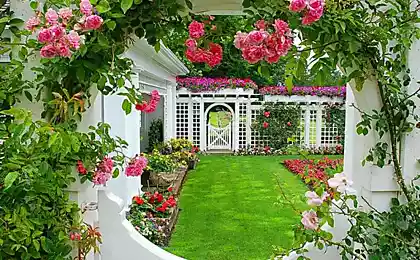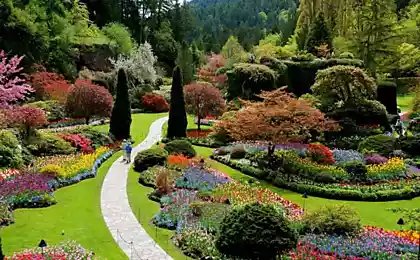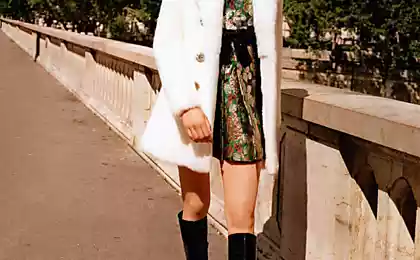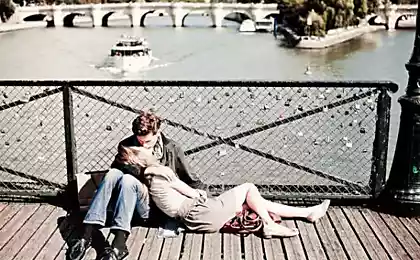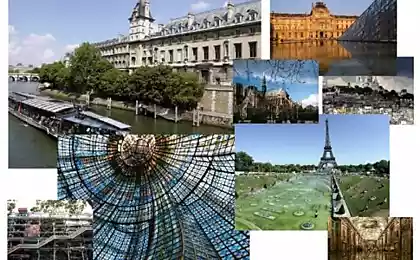677
The gardens on the estate of Claude Monet in Giverny
Near Paris there is a small village of Giverny, where he lived with his family and worked the famous painter Claude Monet. But it is noteworthy that not only this, the majority of tourists is of interest to the garden, which was created by a great artist. The garden consists of two parts: the Clos Normand and a garden with pond in Japanese style.

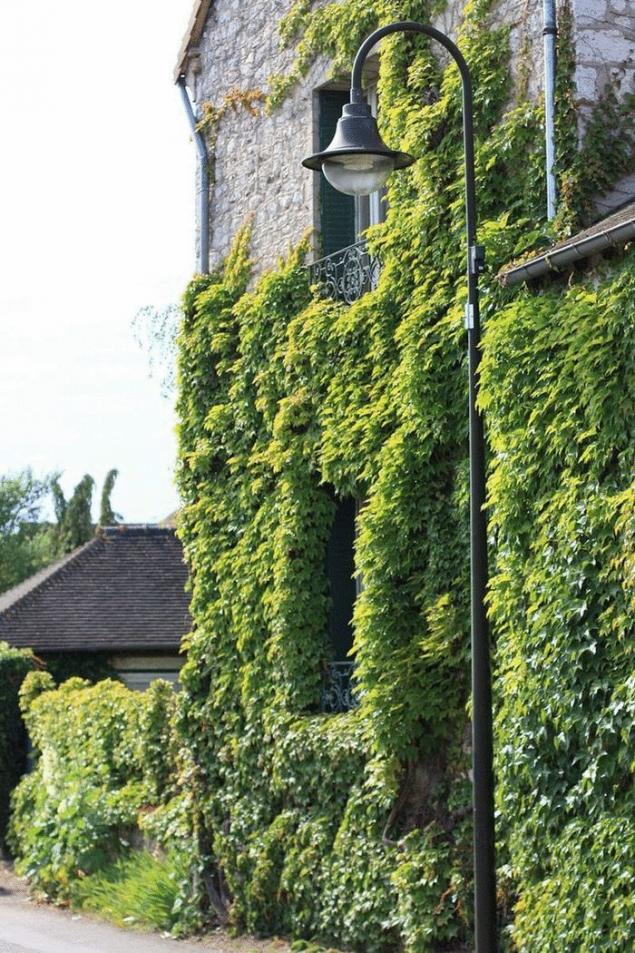

In 1883 at Giverny, the artist settled with his family. To the house adjoined a plot of land of 1 hectare, where there was a small flower garden, this started the history of the famous garden. Monet was fascinated by gardening. First master broke in front of the house flower garden, got rid of the old and gloomy pine trees, and instead planted climbing roses. Over time, the rose grew and formed a tunnel. In the Clos Normand Monet made a garden full of perspectives, symmetries and bright colors.
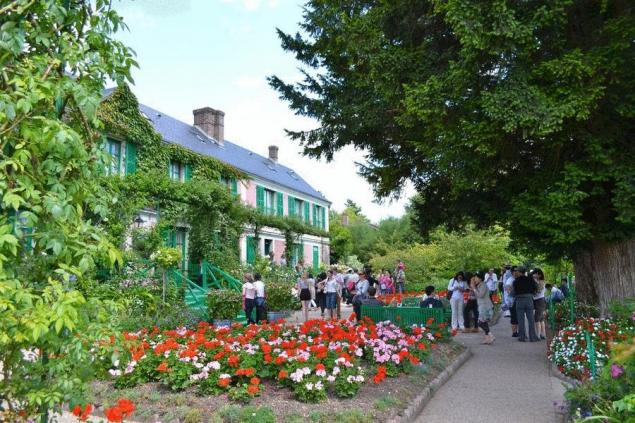

In his work in the garden Monet tried to avoid stereotypes, he mixed simple flowers like daisies and poppies with rare flowers, perfectly combined high and low mallow nasturtium, creating a voluminous floral arrangements. At the same time, he rejected the usual separation and the inherent limitations of gardens in his garden the flowers could grow freely. Over time, Monet is so addicted to botany, I started to share plants with their friends, and then began to buy rare plants for a lot of money. "All my money goes to the garden," said Monet of his garden.
Water garden
In 1893, ten years after his arrival at Giverny, Monet bought the neighbouring piece of land where flowed a small stream. With the support of the Prefecture, Monet had a small pond dug. However, local residents were against it, because you were sure that the strange plants from the garden the artist will poison the water.
Later the pond was enlarged to the size that it has now. The water garden is also full of asymmetry. It was created based on Japanese gardens, admired the artist.



In this garden is a beautiful combination of bamboo, weeping willows, a few small bridges. But the highlight of the water garden is the Japanese bridge entwined with Wisteria. This bridge was built, rustic craftsman. In the future, Monet often found inspiration in this place, he was fascinated with the dawn, when the mist slowly spread along the water and between the clouds of mist, the water reflects the bamboo and willow.
After the death of Monet in 1926, his son Michel inherited the house and garden of Giverny. But he did not live there and care for the fat rests on the shoulders stepdaughter Blanche. Unfortunately, after the Second world war the house and garden were neglected. In 1966 Michel Monet gave the garden of the Academy of fine arts. And in 1977 began rekonstrukcija garden, which was completed in 1980 and the garden welcomed its first guests. For the time managed to recover not all, the famous Japanese bridge was built anew, was dug a new pond. But the restorers have tried to convey the true appearance of the garden and home. Managed to keep Japanese prints and antique furniture.
Nowadays, the garden is visited by over 500,000 people per year in order for the eyes to see beauty, is embodied in the masterpieces of the master.
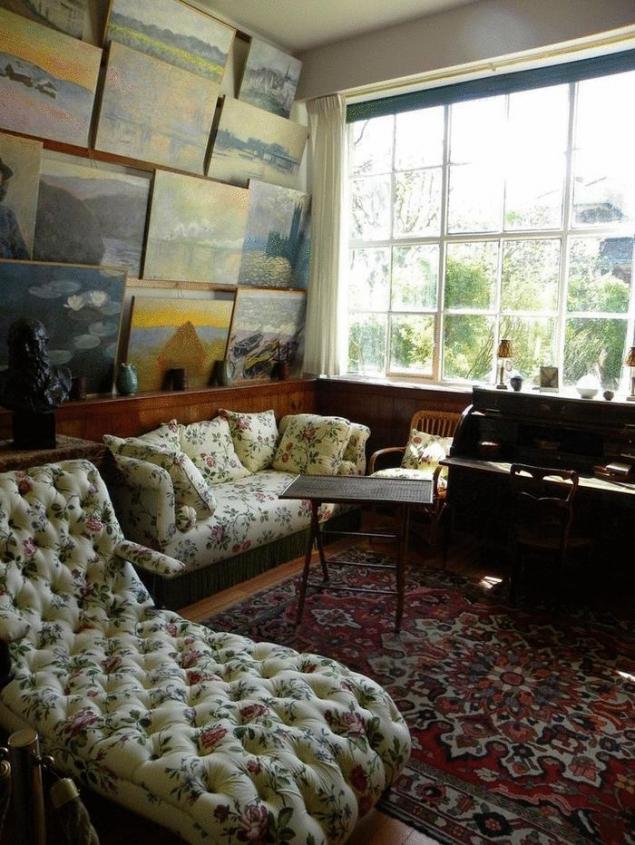

Source: /users/104




